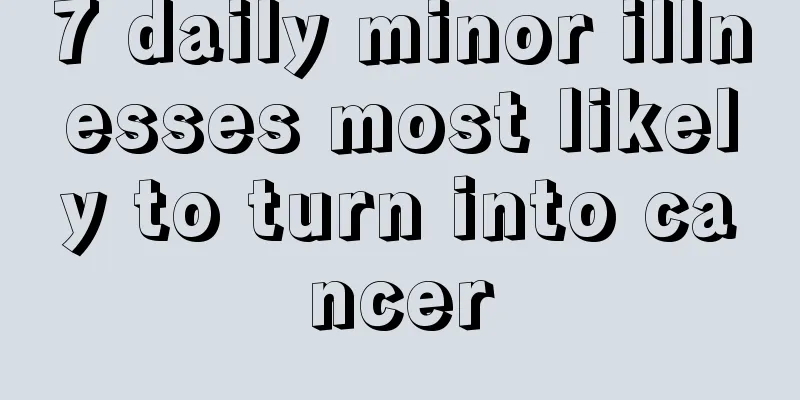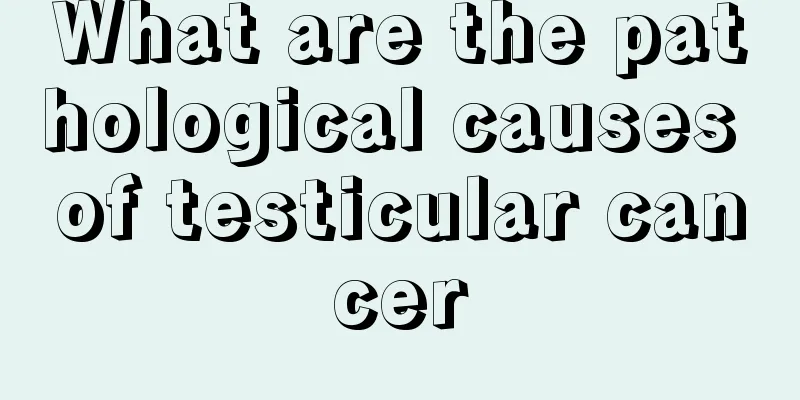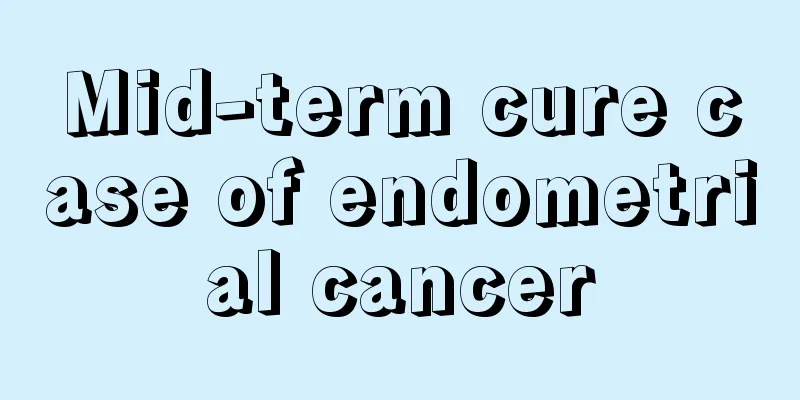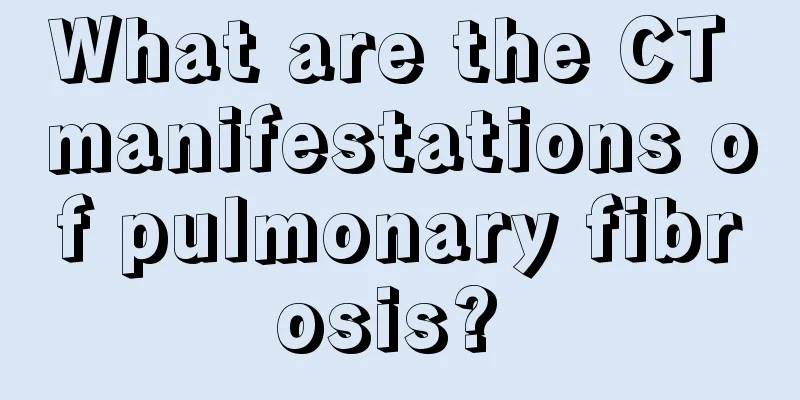What are the symptoms and manifestations of mid-stage renal cancer? Do you know the five early manifestations of renal cancer?

|
Kidney cancer, also known as renal cell carcinoma and renal adenocarcinoma, is the most common malignant tumor of the kidney. Due to the increase in average life expectancy and the progress of medical imaging, the incidence of kidney cancer has increased. The number of kidney cancers that are discovered accidentally during physical examinations without obvious clinical symptoms is increasing, reaching 1/2 to 1/5. Kidney cancer mostly occurs in people aged 50 to 70, and the incidence rate in men is more than twice that in women. The cause of kidney cancer is still unclear, but statistics show that it may be related to smoking, especially in male patients. In addition, kidney cancer has a familial phenomenon, suggesting that genetic factors may be involved. 1. Hematuria Hematuria is often painless and intermittent. The entire hematuria is visible to the naked eye. The interval shortens as the disease progresses. When renal cancer bleeds a lot, it may be accompanied by renal colic, which is often caused by blood clots passing through the ureters. The blood clots in renal cancer hematuria may form strips as they pass through the ureters. The degree of hematuria has nothing to do with the size of renal cancer. Renal cancer can sometimes manifest as persistent microscopic hematuria. 2. Low back pain Low back pain is another common symptom of kidney cancer. Most of the time, it is dull pain and localized in the low back. The pain is often caused by the growth of the tumor and the swelling of the renal capsule. As mentioned above, blood clots passing through the ureter can also cause low back pain. When the tumor invades surrounding organs and lumbar muscles, the pain is more severe and persistent. 3. Lump Lumps are also a common symptom. About 1/3 to 1/4 of kidney cancer patients can be found with enlarged kidneys when they seek medical treatment. The kidneys are relatively hidden, and lumps are difficult to detect before kidney cancer reaches a considerable size. Usually, feeling a lump in the abdomen is already a symptom of the late stage. 4. Pain Pain occurs in about 50% of cases and is also a late symptom. It is caused by the renal capsule or renal pelvis being involved by a gradually growing tumor, or by the tumor invading and compressing the connective tissue, muscles, lumbar vertebrae or lumbar nerves on the posterior abdominal wall, resulting in persistent pain in the affected side of the waist. 5. Other symptoms Unexplained fever, or metastasis when just discovered, fatigue, weight loss, loss of appetite, anemia, cough and hemoptysis and other lung symptoms. In addition, the effects of renal adenocarcinoma are caused by the endocrine activity of the tumor, including polycythemia, hypertension, hypotension, hypercalcemia, and febrile syndrome. Although these systemic, toxic and endocrine effects are non-specific, about 30% of patients first have many mixed manifestations, which are valuable clues. This finding is considered to be a systemic effect of the tumor. The cause of kidney cancer is still not very clear, and it is closely related to the patient's life. The main causes are: 1. Genetic reasons: Genetic factors are an important factor leading to kidney cancer. The incidence rate of patients with a family history of genetics is higher than that of ordinary patients. 2. Smoking: This is the main cause of kidney cancer. Long-term smokers have a very high risk of developing kidney cancer. 3. Obesity and high blood pressure: Obesity and high blood pressure affect each other. People who are too obese and have high blood pressure are more likely to develop kidney cancer. 4. Others: unhealthy diet, abuse of drugs that are highly harmful to the kidneys, and occupations involving radioactive substances. 1. Take good care of your daily diet In our daily life, in addition to ensuring nutrition, protein, vitamins, etc., we should also eat some anti-cancer substances, such as mushrooms, garlic, etc. This is what we should pay attention to in the prevention of kidney cancer. This is also a preventive measure for kidney cancer. 2. Avoid eating spoiled food As the saying goes, diseases come from the mouth. Some moldy and spoiled foods must not be eaten. You should also eat less pickled foods, such as pickles, sauerkraut, pickled meat, etc. These are more important for the prevention of kidney cancer. 3. Active early treatment Active treatment refers to other kidney diseases, such as renal cysts. If these diseases are not treated in time, they are likely to develop into malignant changes and induce renal cancer. Long-term clinical studies have also shown that people with kidney diseases have a higher risk of getting sick than normal people. This is also a way to prevent renal cancer. 1. Western medicine treatment of kidney cancer The main treatment for kidney cancer is surgical resection. The effects of radiotherapy, chemotherapy, and immunotherapy are not ideal and are not certain. Statistics show that kidney cancer combined with radiotherapy has no effect on 5-year survival. 1. Kidney cancer surgery It is divided into simple nephrectomy and radical nephrectomy. It is generally recognized that radical nephrectomy can improve the survival rate. Radical nephrectomy includes the perinephric fascia and its contents: perinephric fat, kidney and adrenal gland. There is still controversy about whether to perform local lymph node dissection in radical nephrectomy. Some people believe that lymph node metastasis often has hematogenous metastasis, and cases with lymph node metastasis will eventually have hematogenous metastasis. The lymph nodes are widely distributed and difficult to clear. However, some people believe that lymph node metastasis is mainly near the renal hilum; the inferior vena cava and aorta area can be radically removed, but radical lymph node dissection surgery finds metastatic lesions, and few people survive for more than 5 years. Therefore, in the case of larger tumor surgery, selective renal artery embolization can be performed before surgery, which can cause severe pain, fever, intestinal paralysis, infection, etc., and should not be used routinely. Special Issues in the Treatment of Kidney Cancer (1) Kidney cancer surgery that preserves kidney tissue Kidney cancer surgery that preserves kidney tissue, such as bilateral kidney cancer or solitary kidney cancer, and poor function of the contralateral kidney. (2) Inferior vena cava tumor thrombus Renal cancer is prone to tumor thrombi in the renal vein and inferior vena cava. In recent years, it is believed that if no local or distant metastasis is found, the tumor thrombi in the vein or in the inferior vena cava can be removed at the same time during radical nephrectomy, and the prognosis is still good. During surgery, the inferior vena cava should be blocked above the level of the thrombus to avoid fatal pulmonary embolism. If the thrombus extends to the heart, the inferior vena cava can be blocked in the pericardium, and then the inferior vena cava can be cut open to remove the thrombus. (3) Local spread of renal cancer to invade adjacent tissues and organs This is a thorny issue in the treatment of kidney cancer. Complete surgical removal of the tumor and its affected tissues is the only cure, and the 5-year survival rate of such patients is no more than 5%. Local spread of kidney cancer may be accompanied by pain because the tumor invades the posterior abdominal wall, sacrospinal muscle and nerve roots. Kidney cancer rarely infiltrates the liver directly, and intrahepatic metastasis is more common than direct infiltration. Involvement of the duodenum and pancreas is almost impossible to cure. Although there are distant metastases, as long as surgery is possible, the primary kidney can still be removed in most cases, and the metastatic lesions may still have a fairly long survival rate. After removing the diseased kidney, hematuria and pain are also eliminated, so it is still worth it. 2. Immunotherapy Over the years, it has been proven that lymphocytes in solid tumors of the human body have an immune response to their tumor cells, but the cytotoxic effect of such tumor-infiltrating lymphocytes (TIL) on autologous tumors is often low because there is an inhibitory mechanism in the tumor. Such TIL cells need to be stimulated and expanded in vitro to fully exert their cytotoxic effect on autologous tumors. Normal human lymphocytes and interleukin 2 (IL-2) culture can produce effector cells called lymphokine-activated killer cells, or LAK cells. A group of LAK cells and IL-2 were used to treat 57 cases of renal cancer; 36 cases of LAK cell IL-2 and 21 cases of IL-2 alone. In the LAK cell IL-2 group, 4 cases had complete remission (CR), 8 cases had partial remission (PR), and the effective rate was 12/36 (33%). Only 1/21 cases in the IL-2 group had CR. Tumor infiltrating lymphocytes, or TIL cells, can also be expanded in vitro with IL-2. Animal experiments have found that this adoptive transfer of TIL has a therapeutic effect 50 to 100 times stronger than LAK cells and can destroy its lung and liver metastases. The possibility of its clinical application is still under discussion. 3. Chemotherapy The chemotherapy effect of kidney cancer is not good, and the effect of single drug treatment is even worse. Experts have counted 37 chemotherapy drugs for single drug treatment of kidney cancer, among which alkylating agents have the best effect. The combination with better effect in combined chemotherapy is: vinblastine methotrexate bleomycin tamoxifem testis; vincristine doxorubicin BCG methyl acetaldehyde oxyprogesterone; vinblastine doxorubicin hydroxyurea MA. In short, multi-drug treatment is better than single drug. 4. Combination of immunotherapy and chemotherapy A group of 957 patients with renal cell carcinoma metastasis ± renal cell carcinoma recurrence were treated with interferon ALPHA-2A. The efficacy was 12% when used alone, and 24% when combined with vinblastine. The survival rate of effective patients was 50% to 70% in 2 years, and that of ineffective patients was 10% to 15%. The ideal dose was 1.8 million units of interferon injected subcutaneously or intramuscularly 3 times a week, and 0.1 mg/kg of vinblastine injected intravenously once every 3 weeks. 2. TCM Treatment of Kidney Cancer 1. Acupuncture 1) Acupuncture treatment device: Use Han's treatment device, connect the electrode plate to the painful area, and connect the negative electrode to the opposite side of the pain, and stimulate with medium and low frequencies. It is suitable for tumors and pain in various parts of the body. 2) Acupuncture and acupoint injection: Sanyinjiao, Kunlun, Zusanli, and 2ml of compound Danshen injection diluted in 5ml of normal saline, 1ml each time, once a day or every other day, 10 days as a course of treatment. Rest for 5 days before starting another course of treatment. Suitable for patients with tumor pain, hematuria with cord-like blood clots, and dysuria. 2. Massage therapy Acupoints such as Quchi, Hegu, Shenshu, Sanyinjiao are selected, and techniques such as rubbing, holding, shaking, patting and hitting are used to strengthen the body, regulate qi, activate blood circulation and remove blood stasis. It is suitable for symptoms such as low back pain and hematuria caused by poor qi movement in kidney tumors. 3. Topical medication Cancer pain powder: 20g each of galangal, frankincense, myrrh, turmeric, gardenia, angelica dahurica, and scutellaria baicalensis, 15g each of fennel, clove, red peony root, costusroot, and phellodendron, and 20 castor beans. Grind the above medicines into fine powder, mix with egg white, and apply to kidney acupoints, changing every 6 to 8 hours. Suitable for patients with kidney tumor pain. 1. Drinking green tea has a good anti-cancer effect. 2. Eat foods that can decompose nitrosamines, such as carrots, peas, melons, pumpkins, bean sprouts, asparagus, etc., as well as foods that can enhance the body's anti-cancer effects, such as mushrooms, shiitake mushrooms, water chestnuts, coix seeds, barley, soybeans, etc. 3. Don’t be picky about food and don’t eat the same food repeatedly. 4. It is advisable to eat bean foods. 5. It is advisable to consume high-protein nutrients. 6. It is advisable to eat foods rich in dietary fiber. 1. Do not eat greasy or high-cholesterol foods. 2. Do not eat irritating or spicy foods. 3. Do not eat food that is too salty. |
<<: How to prevent liver cancer in daily life Five diseases are easily confused with liver cancer
>>: What foods are good for gastric cancer? What are the symptoms of gastric cancer patients
Recommend
Heart rate after exercise
Exercise is a habit that many people stick to. Af...
What are the clinical symptoms of lung cancer? The most common clinical symptoms of lung cancer patients
Everyone knows about lung cancer, which is the mo...
What is the reason for the redness of yellow urine
Many doctors can judge the patient's conditio...
When is the best time to take probiotics
Babies are in the growth and development period, ...
How to effectively prevent bile duct cancer
Biliary duct cancer is a very dangerous "kin...
What medicine is good for prostate cancer
For a long time in the past, people believed that...
What shouldn’t be eaten with seaweed?
Nori is also called seaweed. Nori is a common veg...
Treatment of knee dislocation
When doing some physical labor or other sports in...
What to do if your hands and feet are numb, relief methods for diabetic patients
There are more and more diabetic patients nowaday...
Why do I often feel stuffy pain in my left chest?
If you have a stuffy pain in your left chest, you...
What medicine should I take for gallstone inflammation
Gallstones are a common disease. Most gallstones ...
Is red wine that clings to the glass a good red wine?
Many people will carefully select when buying red...
Can stomach cancer be transmitted to children?
Gastric cancer is a common malignant tumor in the...
What are the early symptoms of lymphoma and what is the best treatment?
What are the early symptoms of lymphoma? How to t...
Which liquid foundation is good at covering blemishes and naturally moisturizing
Liquid foundation is a special makeup item. It ca...









